Edge AI Solutions Driving Business Efficiency and Innovation
Edge computing is a distributed computing paradigm that moves computation and storage closer to the data source — the “edge” of the network. Instead of routing sensor data to distant cloud infrastructure or centralized systems, local edge devices such as gateways, IoT sensors, and cameras can process data directly where it is generated.
This shift is critical in today’s AI-driven world. Modern businesses depend on real time data processing for predictive analytics, automation, and decision-making. By eliminating the delays of cloud-only workflows, edge AI solutions bring speed, security, and scalability.
Some of the core advantages of edge computing for AI workloads include:
Reduced latency: Decisions are made in milliseconds without round-trip delays to cloud servers.
Lower bandwidth usage: Only key insights or compressed results are transmitted instead of massive raw datasets.
Improved data security: Sensitive data remains local, minimizing exposure to external servers.
Operational efficiency: Systems can continue functioning autonomously, even if disconnected from the internet.
This combination of edge computing and artificial intelligence — often described as AI at the edge — is reshaping industries from healthcare to manufacturing to retail.
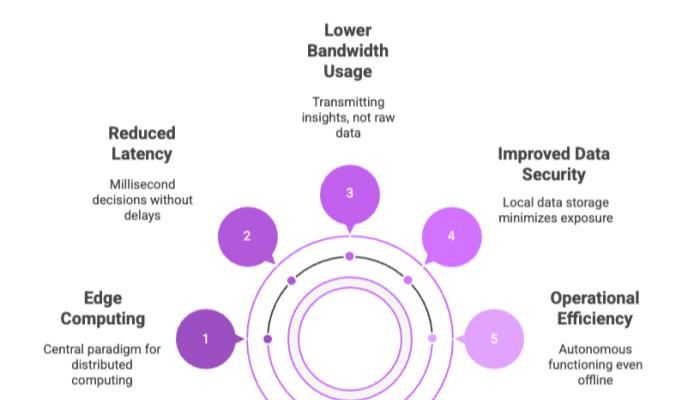

Benefits of Edge AI Technology
Edge AI technology offers a diverse range of benefits that make it attractive for enterprises seeking innovation and efficiency.
Reduced Latency and Real Time Decision Making
With edge AI models deployed on devices, organizations can act immediately on data streams. For example, in self-driving cars or autonomous vehicles, edge AI provides ultra-fast decision-making by analyzing sensor data locally, ensuring safety without relying on remote cloud-based AI.
Enhanced Privacy and Data Security
By processing data locally instead of sending it to external servers, edge AI offers enhanced privacy protections. Businesses handling sensitive data — such as hospitals analyzing medical scans or retailers processing customer payments — benefit from stricter compliance with regulations like GDPR and HIPAA.
Cost Savings and Operational Efficiency
Organizations leveraging edge AI solutions save significantly on internet bandwidth and cloud service fees. Beyond financial savings, operational efficiency improves as systems can run predictive maintenance, quality control, and real time analysis without bottlenecks.
AI Workloads at the Network Edge
Instead of relying on cloud-only systems, edge AI distributes AI workloads across local devices. This provides both scalability and fault tolerance, as even in disconnected scenarios, devices maintain autonomy.
In short, integrating edge AI into business operations delivers faster insights, stronger compliance, and cost-effective innovation.
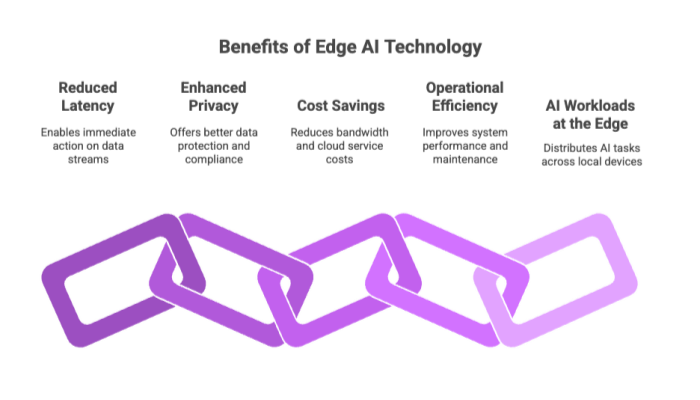

Enterprise Edge Solutions
Large-scale adoption of enterprise edge solutions has accelerated due to companies like NVIDIA, Lenovo, Dell, and HPE, which provide AI hardware, AI services, and edge AI platforms tailored for different industries.
What Are Enterprise Edge Solutions?
Enterprise edge refers to the integration of specialized hardware, advanced tools, and AI software platforms that enable businesses to deploy AI applications close to the data source. Unlike consumer-grade edge devices, enterprise edge systems support high performance workloads with low power computing capabilities.
Key Edge AI Capabilities in the Enterprise
Predictive analytics for supply chains and industrial IoT.
AI models trained in the cloud but optimized for real time decision making at the edge.
Autonomous operations in smart cities and industrial edge environments.
AI solutions for business process automation, customer engagement, and fraud detection.
Business Benefits of Enterprise Edge
By adopting enterprise edge solutions, organizations:
Reduce dependency on cloud based AI while maintaining flexibility.
Improve data center efficiency by handling local inference workloads on the edge and building effective AI infrastructure.
Strengthen data security by keeping sensitive information close to its origin.
Gain faster insights to optimize operations, improve customer experiences, and innovate new services.
Enterprise edge adoption is particularly strong in industrial edge deployments, smart cities, and autonomous vehicles, where latency, reliability, and data analysis speed directly impact outcomes.


Industrial Edge Applications
The industrial edge is one of the most impactful domains where edge AI solutions are reshaping operations. Factories, energy plants, and logistics hubs generate massive sensor data daily. Instead of sending this information to a centralized data center for analysis, edge AI technology enables processing data directly on-site.
Predictive Maintenance
Predictive maintenance is one of the top edge AI use cases in industry. By monitoring machine vibrations, temperature, and performance metrics, edge devices can run AI models that predict equipment failures before they occur. This reduces downtime, lowers maintenance costs, and boosts overall reliability.
Quality Control and Autonomous Operations
Another area where edge AI offers significant value is quality control. Cameras combined with AI algorithms can instantly detect product defects on production lines, enabling real time decision making without manual inspection. In addition, industrial edge deployments enable autonomous operations, where machinery adjusts dynamically to optimize throughput and reduce waste.
Smart Manufacturing
Manufacturers integrating edge AI solutions achieve operational efficiency by connecting diverse devices into intelligent networks. These systems provide key insights to optimize energy usage, improve workplace safety, and enhance worker productivity. This trend is often referred to as smart manufacturing, where the combination of AI workloads and industrial IoT transforms business operations.
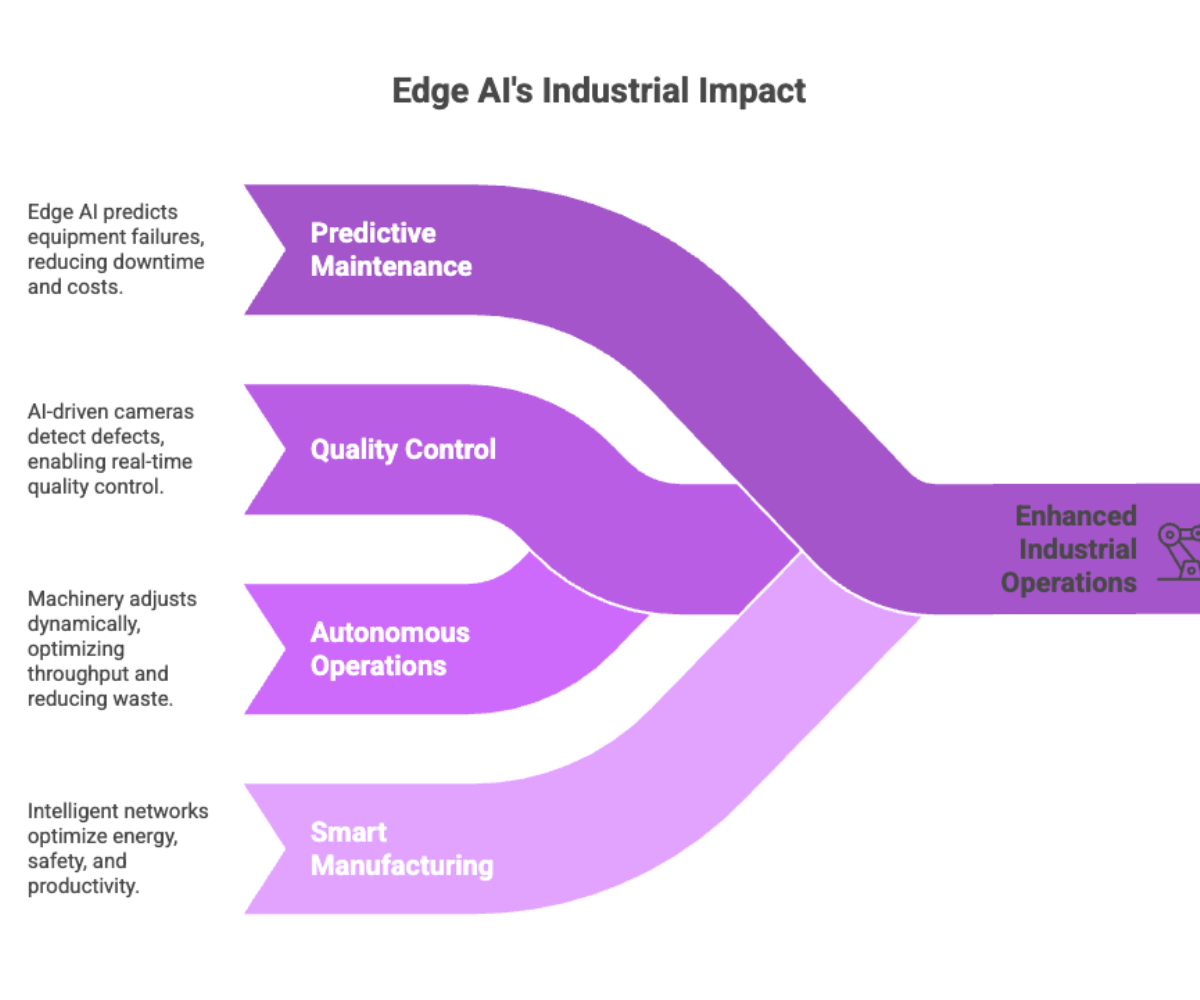

Data Center Efficiency
Although edge computing reduces reliance on cloud-based systems, data centers still play a crucial role. Increasingly, data centers themselves are adopting edge AI capabilities to become more efficient, sustainable, and secure.
Real Time Monitoring and Optimization
Edge AI technology enables real time monitoring of power consumption, cooling systems, and network usage within data centers. By applying predictive analytics, operators can reduce energy waste and anticipate failures before they impact uptime.
Enhancing Data Security
With cyber threats rising, AI solutions deployed at the data center edge can detect anomalies in traffic patterns, helping mitigate sensitive data breaches. Instead of relying solely on cloud-based firewalls, edge AI applications add an extra layer of localized defense.
Reducing Costs and Environmental Impact
By using edge AI models for predictive cooling and workload distribution, companies can cut electricity usage significantly. This not only lowers operational costs but also reduces carbon emissions, aligning with sustainability goals.
In short, enterprise edge solutions are not just for manufacturing floors and smart cities — they are transforming the data center ecosystem itself.
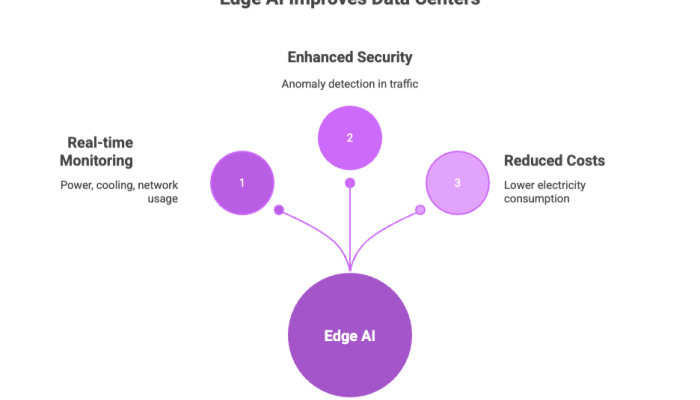

AI Solutions for Business
Beyond industrial and data center deployments, AI solutions for business are helping enterprises optimize workflows, improve customer experiences, and create new revenue streams.
AI Platforms and Services
Vendors such as Lenovo, Dell, and IBM now provide AI solutions tailored to enterprises. These platforms combine specialized hardware, AI services, and advanced tools to make deploying AI applications faster and more accessible.
Business Applications of Edge AI
Customer Service: AI-powered chatbots running at the network edge can deliver faster responses while maintaining compliance with sensitive information handling.
Marketing and Sales: AI applications analyze purchase histories and behavior in real time, enabling hyper-personalized recommendations.
Fraud Detection: AI workloads running on local devices can identify anomalies in financial transactions within milliseconds.
Operational Benefits
By bringing AI directly into their operations, businesses achieve:
Faster insights and improved agility.
Cost savings from reduced reliance on cloud infrastructure.
Data security improvements from processing information closer to its data source.
Scalability, as AI can be deployed across thousands of diverse devices with minimal latency.
These AI solutions illustrate how edge AI is reshaping industries by optimizing business operations and enabling innovation at scale.
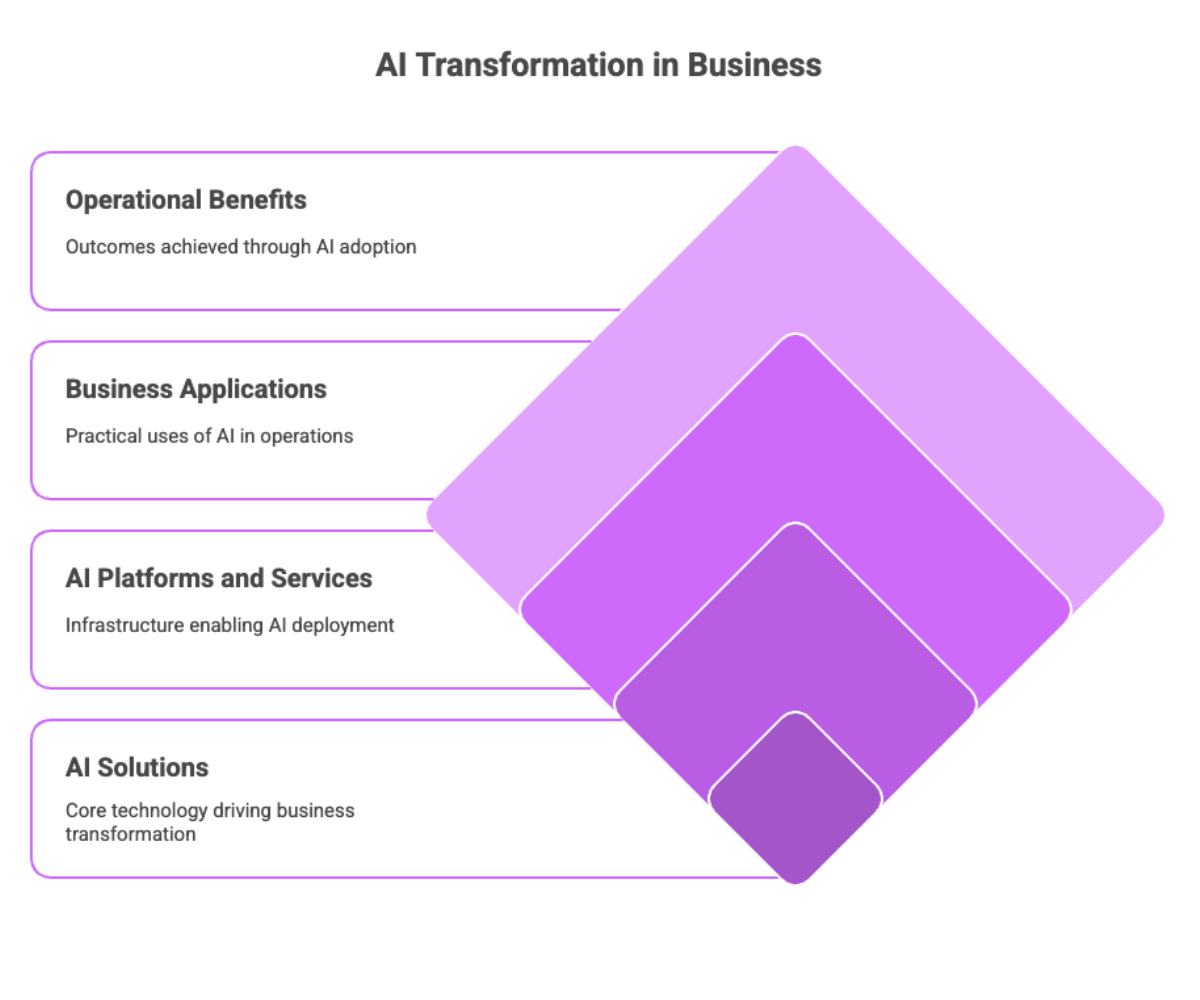

Smart Homes and Edge AI
One of the most visible areas where edge AI solutions are thriving is in smart homes. From voice-controlled assistants to intelligent thermostats, these systems rely on edge devices to process information locally, improving responsiveness and reducing reliance on external servers.
Real Time Insights for Home Efficiency
Edge AI technology allows devices like smart thermostats, lighting systems, and energy monitors to perform real time analysis of household patterns. By processing data directly on local hardware, they can reduce energy waste, improve comfort, and lower costs.
Enhanced Privacy and Security
With sensitive data such as voice recordings, video feeds, and personal schedules, privacy is paramount. By running AI applications locally on smart cameras and sensors, smart homes minimize the need for sending data to the cloud. This enhanced privacy makes edge AI an ideal solution for consumer trust.
Autonomous Operations
Modern homes increasingly use AI at the edge for autonomous operations, such as smart locks that recognize residents or refrigerators that track inventory automatically. These features provide both convenience and security while reducing dependency on cloud AI services.
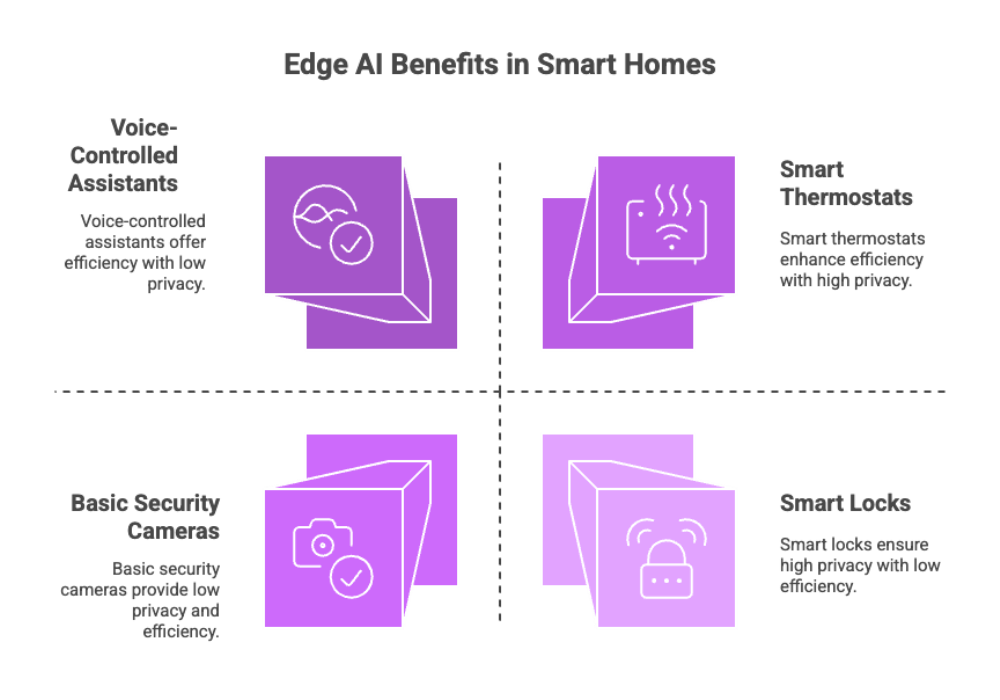

Smart Cities and Edge AI
Scaling from homes to entire cities, edge AI solutions play a vital role in building smart cities. These urban ecosystems rely on real time processing of sensor data to improve safety, efficiency, and sustainability.
Traffic and Public Safety
Traffic control systems use cameras combined with AI models to manage congestion dynamically.
Surveillance cameras with edge AI applications enhance public safety while ensuring sensitive information is processed locally.
Emergency services benefit from real time decision making, responding faster to incidents.
Energy and Resource Management
Smart grids leverage AI algorithms at the network edge to optimize energy distribution. Similarly, IoT devices in waste management and water systems use edge AI models to reduce waste and improve sustainability.
The Role of Enterprise Edge Solutions
Enterprises and municipalities deploying edge AI platforms gain access to advanced tools that integrate thousands of diverse devices into a cohesive network. This level of operational efficiency is reshaping how cities operate.
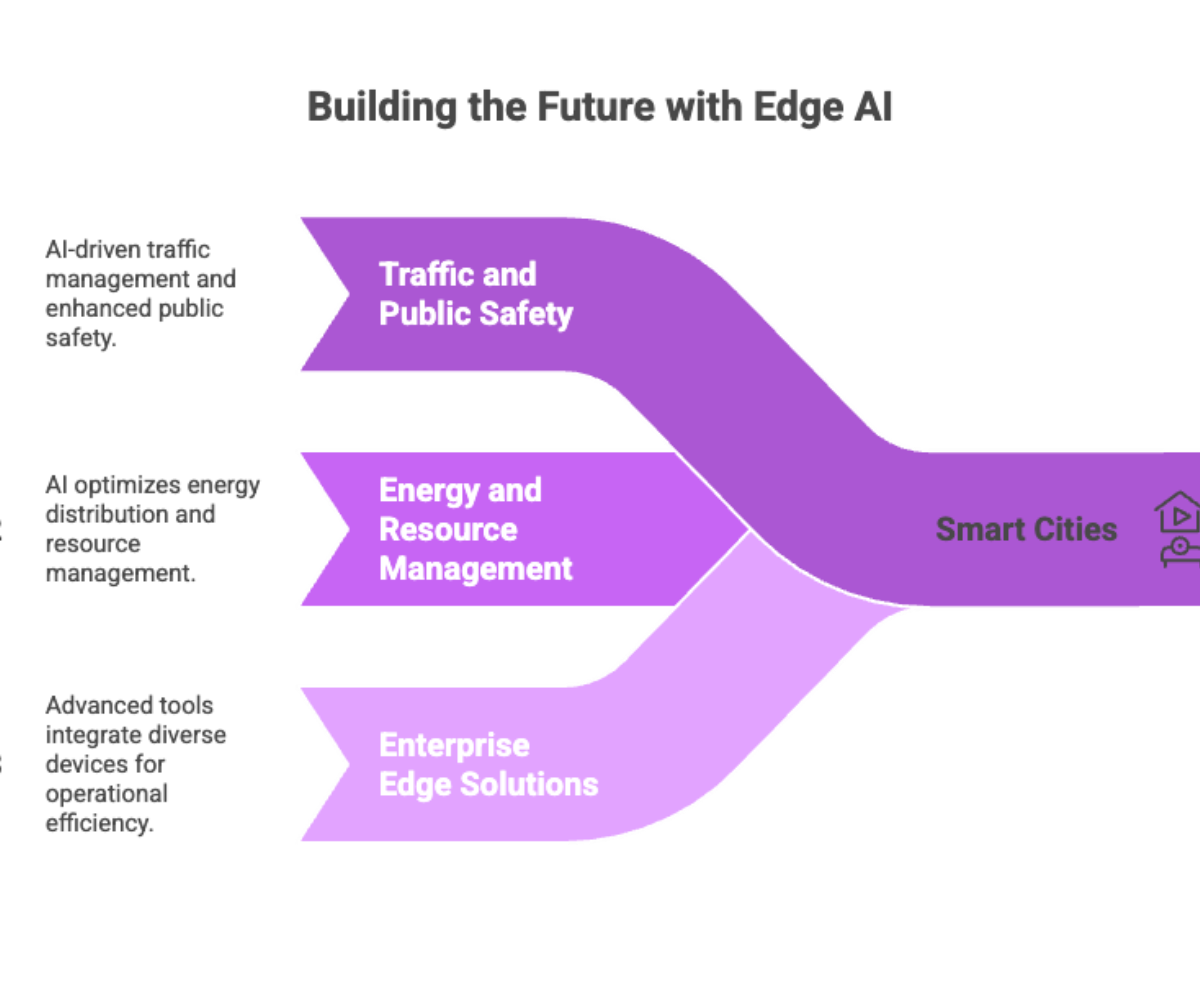

Autonomous Vehicles and Edge AI
Perhaps the most high-stakes implementation of edge AI technology is in autonomous vehicles. Self-driving cars demand real time data processing for safety-critical decisions.
Local Processing for Split-Second Decisions
Autonomous systems cannot rely on cloud servers for millisecond-level decisions. Instead, they leverage edge AI models to process raw data from LIDAR, radar, and cameras locally. This ensures real time decision making without internet delays.
Predictive Analytics and Safety
Predictive maintenance keeps vehicles running efficiently by analyzing performance data locally.
Predictive analytics enables cars to anticipate traffic changes and hazards.
AI workloads distributed across onboard specialized hardware ensure safe navigation even in harsh environments.
Redefining Transportation
By combining AI at the edge with cloud AI (for training complex AI models), autonomous vehicles create hybrid systems. This blend delivers high performance locally while leveraging the scalability of cloud infrastructure.
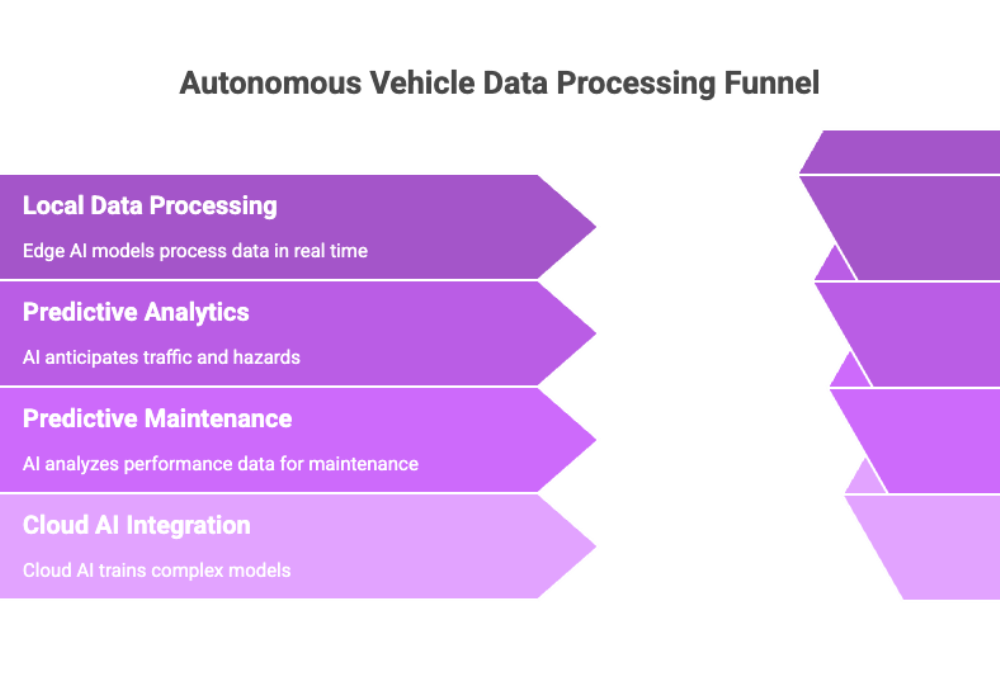

Conclusion: The Future of Edge AI Solutions
Edge AI solutions are no longer optional — they are foundational to modern business operations, smart homes, industrial edge, data centers, and autonomous systems.
Key Benefits Recap
Reduced latency → Enables real time decision making.
Enhanced privacy → Keeps sensitive data processed locally.
Operational efficiency → Optimizes resources and reduces costs.
Scalability → Supports a diverse range of edge devices and AI applications.
Innovation driver → Reshaping industries from smart manufacturing to autonomous vehicles.
The Road Ahead
As edge AI technology matures, we will see:
Growth in AI workloads designed for low power computing at the network edge.
Expansion of AI services and AI platforms that make deploying edge AI easier for businesses of all sizes.
Deeper integration of cloud AI and AI at the edge into hybrid ecosystems.
More specialized hardware designed to run AI models efficiently on local devices.
In summary, edge AI is reshaping industries by combining the strengths of edge computing and artificial intelligence. From smart cities to self-driving cars, its ability to deliver real time insights while ensuring data security makes it the cornerstone of next-generation technology.


